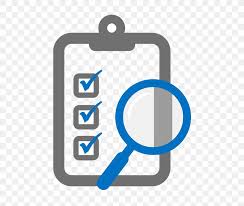Unlocking LinkedIn's Potential: 15 Strategies for a Powerful Professional Network
LinkedIn, with its over 700 million users, transcends a mere professional networking platform; it serves as a dynamic B2B marketing ecosystem and a vibrant marketplace of ideas. This article outlines fifteen strategies to harness LinkedIn's potential, progressing beyond profile creation to establish a commanding professional online presence. We will explore foundational principles, audience engagement methods, strategies for building authority, and advanced tactics, all grounded in established marketing theories and models, including the AIDA model (Attention, Interest, Desire, Action), social exchange theory, and the diffusion of innovations theory. These frameworks provide a robust theoretical foundation for understanding and applying the practical strategies discussed.
I. Foundational Strategies: Profile Optimization and Goal Setting
SMART Goal Setting and Performance Measurement: Before implementing any tactic, define Specific, Measurable, Achievable, Relevant, and Time-bound (SMART) goals. Instead of vague aspirations such as "increase brand awareness," establish precise objectives, such as "generate 50 qualified leads within the next quarter via targeted LinkedIn engagement." Aligning these goals with overarching marketing objectives facilitates the precise measurement of Return on Investment (ROI), a crucial metric for evaluating marketing campaign success. This approach directly applies the SMART framework for goal setting, ensuring that goals are not only ambitious but also practical and measurable.
Profile Optimization for Enhanced Search Engine Visibility: Your LinkedIn profile functions as your digital brand ambassador. Optimize it for search engines using relevant keywords across your headline, summary, and experience sections. A digital marketing manager, for instance, might incorporate terms like "Search Engine Optimization (SEO)," "Search Engine Marketing (SEM)," "content marketing," "digital strategy," and "social media marketing" to enhance discoverability through search engine results pages (SERPs). This application of SEO principles increases profile visibility to potential clients and collaborators, maximizing the reach of one's professional brand.
II. Audience Engagement and Network Cultivation
Strategic Network Building through LinkedIn Groups: Active participation in pertinent LinkedIn Groups fosters community and thought leadership. Meaningful engagement in discussions, providing insightful answers to questions, and sharing relevant expertise establish credibility and build professional relationships. A software development firm, for example, could join groups focusing on agile methodologies, showcasing expertise in project management best practices. This demonstrates active participation, building social capital and enhancing the firm's reputation within its niche, aligning with the principles of community building and social exchange theory.
Content Marketing and the Diffusion of Innovations: Implement a content calendar featuring engaging posts, articles, and videos showcasing industry trends, case studies, and practical tips. This strategy directly applies the diffusion of innovations theory, disseminating valuable information to the target audience, accelerating adoption, and establishing thought leadership. Utilizing diverse content formats – videos, infographics, articles – caters to various learning preferences, increasing the reach and impact of the content.
Relationship Management through Strategic Engagement: Active engagement transcends mere content creation. Interacting meaningfully with connections' posts through likes, insightful comments, and shares fosters genuine relationships. For example, a social media manager could offer expert commentary on a connection's post regarding a new marketing platform, demonstrating expertise and encouraging collaboration. This reflects the social exchange theory; reciprocal engagement builds trust and enhances professional relationships.
Targeted Advertising with LinkedIn Ads: Utilize LinkedIn Ads to target specific demographics, interests, or job titles. For instance, a recruiting agency could employ sponsored content to promote a blog post on talent acquisition best practices, reaching a highly segmented audience. A/B testing various ad creatives and targeting parameters is vital for maximizing campaign efficiency and ROI.
III. Establishing Thought Leadership and Expanding Reach
Thought Leadership through Consistent Content Creation: Regularly sharing valuable content establishes credibility. Publishing articles, contributing to industry conversations, and providing expert insights on relevant topics build authority. A cybersecurity consultant, for example, could author articles about emerging cyber threats, demonstrating their expertise and solidifying their thought leadership position. This strategy significantly enhances the value proposition of their profile.
Strategic Networking and Influencer Collaboration: Networking extends beyond simple connections; it involves actively engaging with industry influencers. Collaboration with influencers expands reach and enhances credibility. A startup founder might partner with established entrepreneurs, sharing knowledge and cross-promoting each other's brands. This leverages network effects and social proof, accelerating brand recognition and growth.
Building Trust Through Case Studies and Testimonials: Showcase successful client experiences via detailed case studies and testimonials to build trust. A SaaS company might feature a client testimonial highlighting improvements achieved through their software. This exemplifies social proof, enhancing brand credibility and fostering client confidence.
Data-Driven Strategy Refinement through LinkedIn Analytics: Regularly analyze LinkedIn analytics to track key performance indicators (KPIs) like engagement rates, click-through rates, and follower growth. A marketing manager might track the performance of various content formats (videos versus articles) to optimize their strategy. This data-driven approach ensures continuous improvement and maximizes the effectiveness of LinkedIn efforts.
IV. Advanced Strategies for Maximizing Impact
Brand Amplification through Employee Advocacy: Empower employees to optimize their profiles and share company content, exponentially increasing brand visibility. An HR manager could implement an employee advocacy program, offering training and resources to encourage employee participation. This leverages employee networks, amplifying brand reach and strengthening employer branding.
Enhanced Visibility through LinkedIn Events: Actively participate in LinkedIn Events, engaging with speakers and attendees to strengthen brand presence. A marketing team could share event insights and network with attendees, generating leads and opportunities. This enhances brand visibility and facilitates direct engagement with potential clients or partners.
Targeted Lead Generation with LinkedIn Sales Navigator: Utilize LinkedIn Sales Navigator for advanced lead identification and targeting. A B2B sales representative might use advanced search filters to identify key decision-makers within target accounts, streamlining the sales process and improving conversion rates. This highly effective lead generation approach aligns with sales funnel models.
Real-Time Engagement with LinkedIn Live: Leverage LinkedIn Live to host live video sessions, webinars, or Q&A sessions to increase engagement. A business coach could use LinkedIn Live to host a session on leadership strategies, fostering real-time interaction and building rapport with potential clients. This approach leverages the immediacy of live video, enhancing engagement and fostering stronger connections.
Competitive Analysis and Strategic Differentiation: Monitor competitors' LinkedIn strategies, analyzing their content, engagement, and tactics to identify opportunities for improvement and innovation. A digital marketing agency could analyze competitor posts to discover effective content formats and adapt strategies accordingly. This allows for strategic differentiation and gaining a competitive advantage.
Conclusion and Recommendations
LinkedIn offers significant potential for professional networking and marketing success. By systematically implementing the strategies outlined, prioritizing SMART goal setting, consistent content creation, active engagement, and data-driven optimization, professionals and businesses can cultivate a commanding online presence that yields demonstrable results. Future research could employ quantitative methodologies, such as regression analysis, to analyze the long-term impact of various engagement strategies on brand perception and lead generation. The applicability of these strategies extends across diverse industries, though specific tactics may require adaptation based on individual contexts. The findings presented provide a valuable framework for enhancing professional networking and marketing success on LinkedIn.Reader Pool: How might the effectiveness of different LinkedIn engagement strategies be evaluated and compared using a quantitative, data-driven approach?





